
© Eric R. Pianka Water molecules exist in three different forms: ice, liquid water, and steam depending on temperature. Hydrogen bonds are strongest at subzero temperatures when they hold six oxygen atoms in a tight hexagonal molecule of ice (leftmost below). In its liquid form (middle below) oxygen atoms are loosely linked in chains, whereas at temperature above 100o C, they are separated in steam (right plot below). 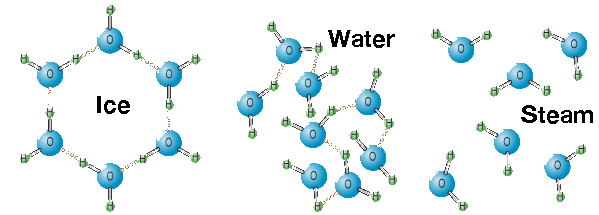 As liquid water is cooled to form ice, hydrogen bonds form into chains and then 3 dimensional boxes as depicted below. 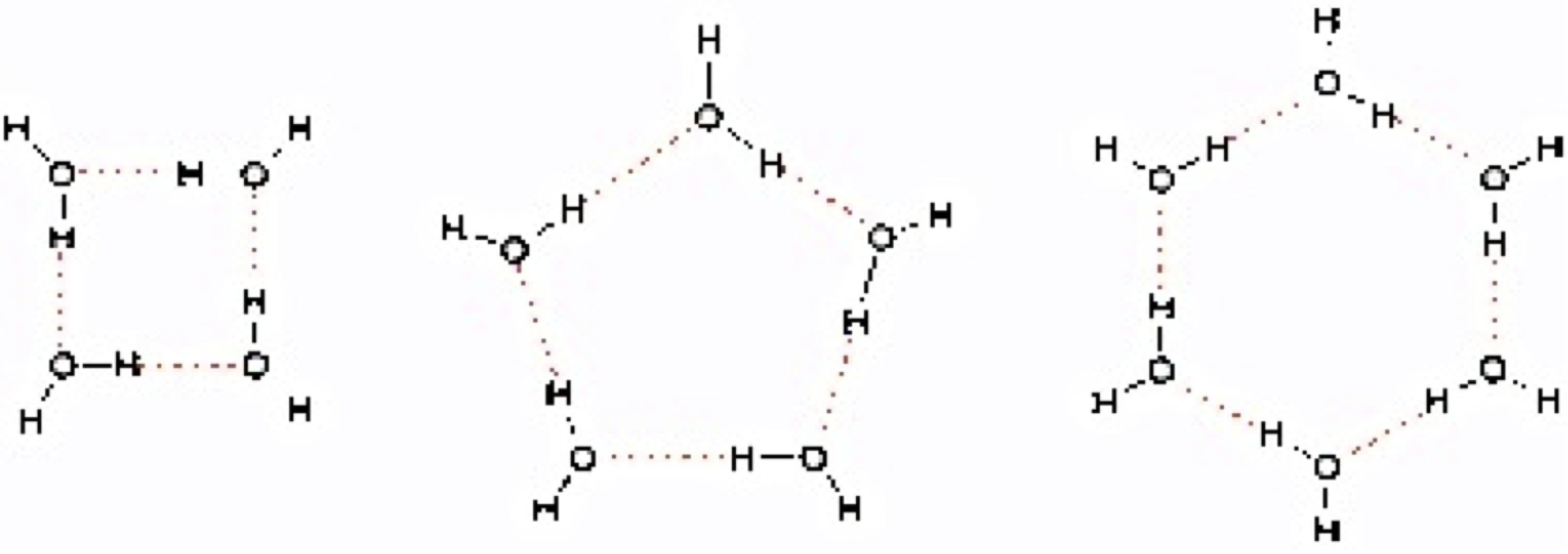 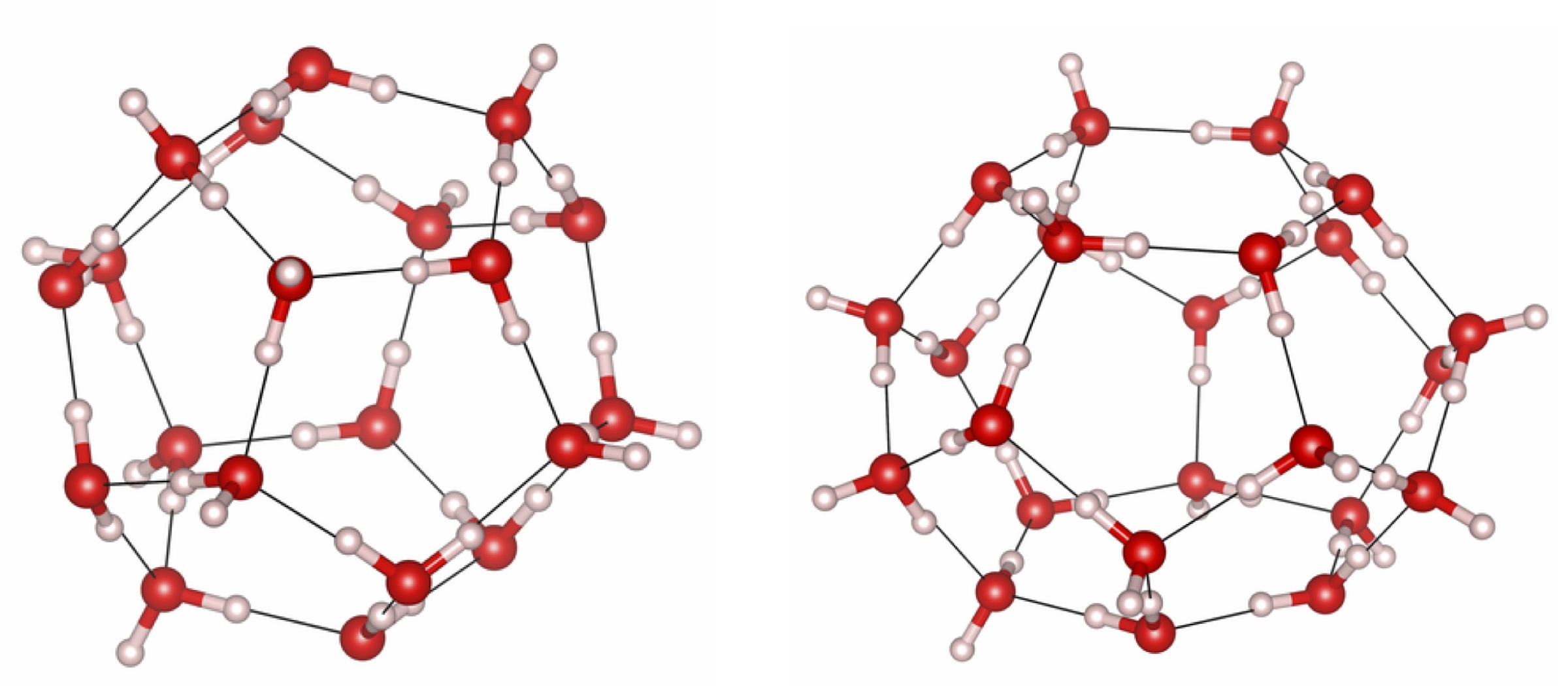 Molecules of methane can be trapped inside these frozen boxes of water which are kown as "clathrates" of "hydrates" as shown below. 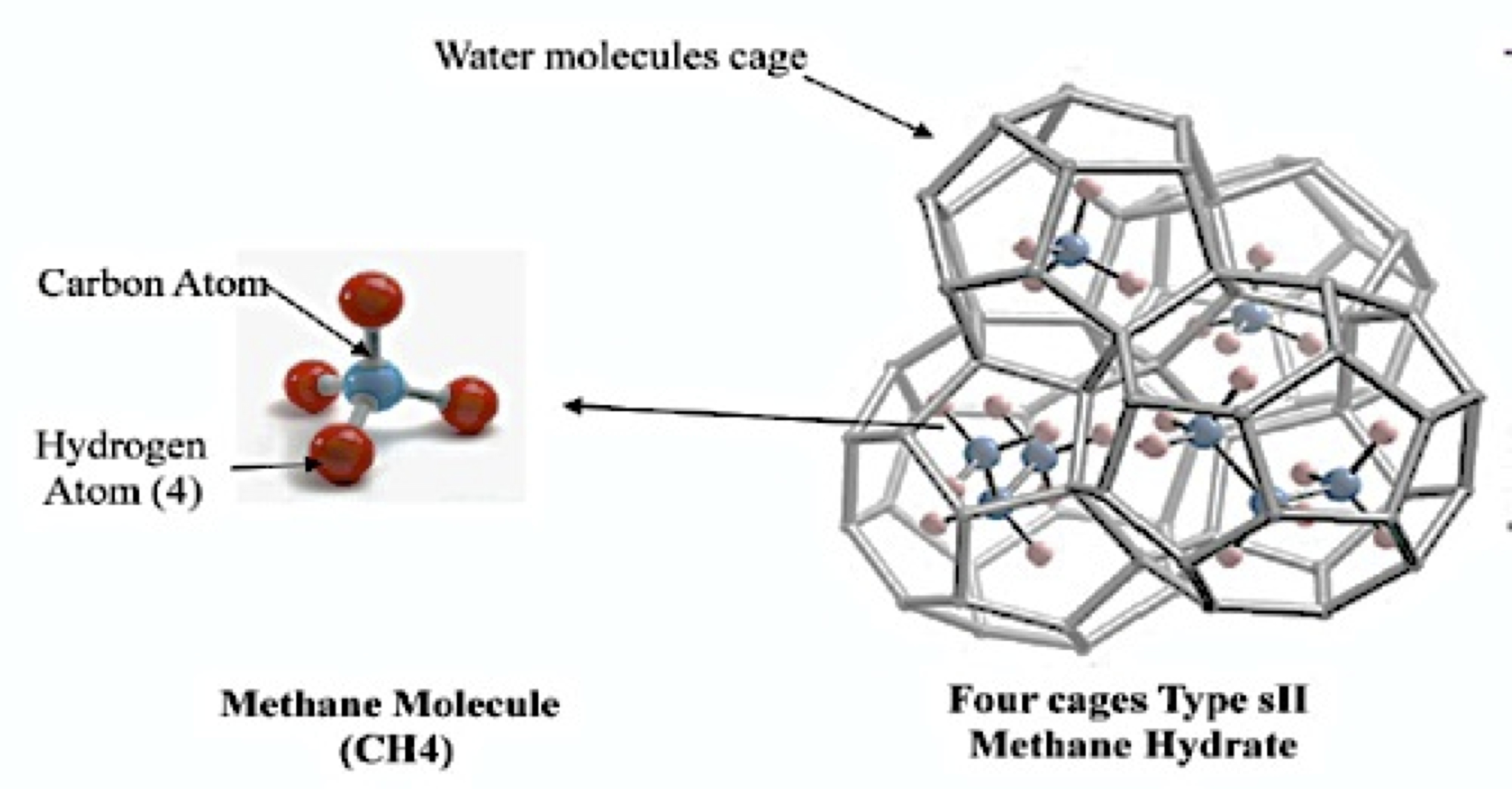 Methanogenic bacteria survive today in anaerobic zones deep in Earth's crust and in the ocean depths. Vast amounts of methane are locked up inside ice-like frozen clathrates in permafrost and the ocean depths. When these clathrates are brought to the surface, methane gas is released (see above photos). The sudden release of large amounts of gaseous methane from long frozen methane clathrates has sometimes been implicated in the major extinction event at the Permian-Triassic boundary 250 mya ( NASA's Gavin Schmidt on Methane and rapid climate change). As many as 96% of all marine species and 70% of terrestrial vertebrates died out then. More than half of the then extant insect families also perished. Coupled with massive volcanic events, sudden release of large amounts of methane into the atmosphere caused drastic climatic changes, anoxia, increasing aridity, and changes in ocean current circulation patterns. Fungi are thought to have flourished during this period, probably because they consumed much of the dead organic matter. Long frozen fossil methane is now being released from thawing permafrost and from clathrates in the deep oceans at an ever accelerating rate. As temperatures rise, more methane bubbles up to the surface, further raising temperatures in an ever increasing positive feedback loop. Is there a critical "tipping point" at which the state of Earth's surface will change drastically, and if, so, what is it and when will it be reached? Some experts think this tipping point has already been crossed. Major methane vents are shown on the following map. Methane levels in the atmosphere are now more than double the levels that they have been over the last half million years. This could well portend the onset of a powerful positive feedback loop that will almost certainly lead to very rapid global warming. 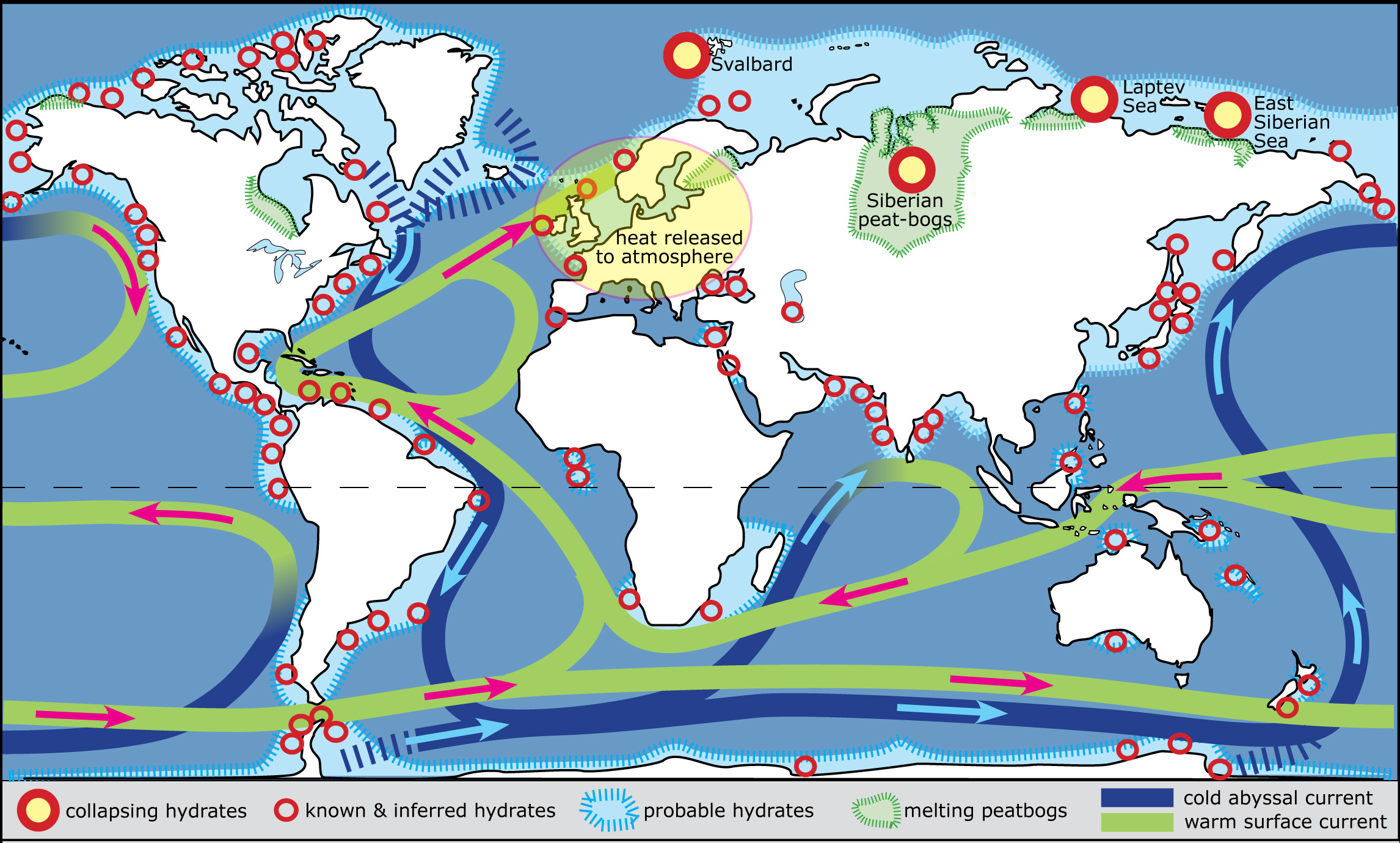
An international consortium involving the USGS, Canada, Japan, India, and Germany is extracting methane from frozen clathrates and burning deep sea gas hydrates off the north coast of Canada. We should be doing everything we can to KEEP the methane frozen in the deep oceans, however, fools that we humans are, we are deliberately extracting it and BURNING it releasing a lot of waste heat that cannot be dissipated as well as adding more water vapor and carbon dioxide to the atmosphere, further enhancing global warming. Fracking does the same thing but extracts natural gas from deep in the earth's crust. We should be doing everything we can to KEEP the methane locked up in Earth's crust and frozen in the deep oceans. However, people seem to think we can live above the laws of nature and can use all the energy we "need" and want. Fracking cracks deep rocks releasing methane produced by anaerobes much of which vents to the surface and enters the atmosphere. 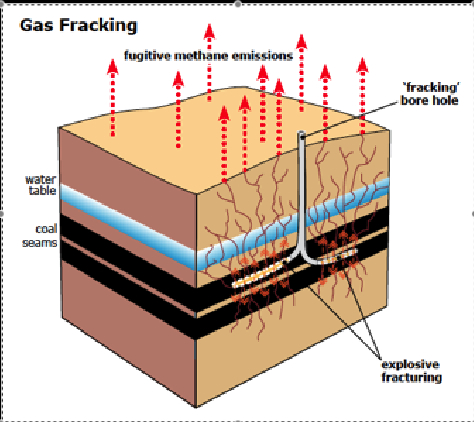 We are also deliberately extracting methane from ocean clathrates and BURNING it
for energy. Both fracking and clathrate mining release a lot of waste heat that
cannot be dissipated as well as adding more water vapor and carbon dioxide to the
atmosphere, further enhancing global warming. An international consortium involving
the USGS, Canada, Japan, India, and Germany is already extracting methane from
clathrates and burning deep sea methane off the north coast of Canada.
The US government supports many similar "Gas Hydrate" projects. Our voracious appetite
for ever more and more energy accelerates the rate of
global warming.
These ill-fated efforts to use methane as fuel will only hasten climate change.
What fools we humans are!
We are also deliberately extracting methane from ocean clathrates and BURNING it
for energy. Both fracking and clathrate mining release a lot of waste heat that
cannot be dissipated as well as adding more water vapor and carbon dioxide to the
atmosphere, further enhancing global warming. An international consortium involving
the USGS, Canada, Japan, India, and Germany is already extracting methane from
clathrates and burning deep sea methane off the north coast of Canada.
The US government supports many similar "Gas Hydrate" projects. Our voracious appetite
for ever more and more energy accelerates the rate of
global warming.
These ill-fated efforts to use methane as fuel will only hasten climate change.
What fools we humans are!
Links: Methane Eric Chaisson - Waste Heat Waste Heat from Cities Eric Pianka: The Weakest Link Unburnable Fossil Fuels Oreskes, N. and E. M. Conway 2014. The Collapse of Western Civilization: A View from the Future, Columbia University Press. Richard Heinberg: Searching for a Miracle Dawn Stover: Renewable Energy Myth Nicole Foss Video: Peak Oil & Economic Crisis Nicole Foss: Renewable Energy: The Vision And A Dose Of Reality Storm Smith -- Nuclear Power Down to the Bottom Line: Energy Al Gore's bold new goal Storing Wind Energy Gravity Batteries The Energy Shadow of a Dollar Wikipedia: Peak Oil Wood, M. C. 2013. Nature's Trust. Cambridge University Press. |